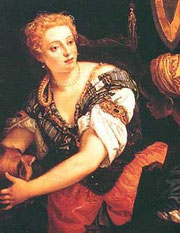North Berwick
In 1590, King James VI (19 June 1566 – 27 March 1625) of Scotland took a personal interest in the prosecution of a coven of witches from North Berwick who were accused of trying to assassinate him and his new bride Anne of Denmark with the use of Black Magic.
The first suspect was Gilly Duncan who’s master, David Seaton, a bailiff, tortured to find out where she went at night without his permission, as he thought she might be a witch. Wracked with pain she confessed that she was part of a coven and their conspiracy to assassinate King James VI. The plan had been to use magic to raise a storm that would sink the King’s ship as he returned with his new bride. There had been a bad storm that prevented Anne of Denmark reaching Scotland, forcing her to seek shelter in Norway. King James then sailed out from Leith to fetch Anne to Scotland personally.
Strangely the Admiral of Danish fleet carrying Anne is thought to have blamed the storms on a high official’s wife from Copenhagen and thanks to this bit of bad weather, witch trials were held in both Scotland and Denmark.
It has been said that 100 women were arrested in North Berwick in connection with the coven, who were actually graced with the presence of Satan at their gatherings, some of which took place at the Auld Kirk in North Berwick, the porch way of which still survives.
Amongst those implicated was the Francis Stuart Hepburn, Earl of Bothwell, who escaped and eventually fled to Naples and died there in poverty.
Dr John Fian a local school master at Saltpans confessed under torture to be “that he was Clarke to all those that were in subjection to the Diuels service, bearing the name of witches, that always he did take their oathes for their true service to the Diuell, and he wrote for them such matters as the Diuell still pleased to command him.” for which he was burnt in 1591 in Edinburgh.
Agnes Sampson was interrogated by King James at Holyrood House. The story goes that she made wild claims about covens meeting at Prestonpans and making effigies of the King. He accused of being a liar did not believe her until she whispered something in his ear, supposedly a private conversation he had had with his wife on their wedding night, then he believed. Agnes Sampson was burnt at Castle Hill in Edinburgh, which is fate that also befell Euphemia Maclean, daughter of Lord Cliftonhall.
The following are from Newes from Scotland, an early tract on Scottish Witchcraft:
Agnes Sampson was arrested along “sundrie” [sic] others, questioned regarding her role in the storm raising, and that of others. She was put to the torture which she resisted at first but:
“This aforeaside Agnis Sampson which was the elder Witch, was taken and brought to Haliruid house before the Kings Maiestie and sundry other of the nobility of Scotland, where she was straitly examined, but all the perswasions which the Kings maiestie vsed to her with ye rest of his counsell, might not prouoke or induce her to confesse any thing, but stood stiffely in the deniall of all that was laide to her charge: whervpon they caused her to be conueied awaye to prison, there to receiue such torture as hath been lately prouided for witches in that country: and forasmuch as by due examination of witchcraft and witches in Scotland, it hath latelye beene found that the Deuill dooth generallye marke them with a priuie marke, by reason the Witches haue confessed themselues, that the Diuell dooth lick them with his tung in some priuy part of their bodie, before hee dooth receiue them to be his seruants, which marke commonly is giuen them vnder the haire in some part of their bodye, wherby it may not easily be found out or seene, although they be searched: and generally so long as the marke is not seene to those which search them, so long the parties that hath the marke will neuer confesse any thing. Therfore by special commaundement this Agnis Sampson had all her haire shauen of, in each parte of her bodie, and her head thrawen with a rope according to the custome of that Countrye, beeing a paine most greeuous, which she continued almost an hower, during which time she would not confesse any thing vntill the Diuels marke was found vpon her priuities, then she immediatlye confessed whatsoeuer was demaunded of her, and iustifying those persons aforesaid to be notorious witches.”
“Item, the saide Agnis Sampson confessed before the Kings Maiestie sundrye thinges which were so miraculous and strange, as that his Maiestie saide they were all extreame lyars, wherat she answered, she would not wishe his Maiestie to suppose her woords to be false, but rather to beleeue them, in that she would discouer such matter vnto him as his maiestie should not any way doubt off. And therupon taking his Maiestie a little aside, she declared vnto him the verye woordes which passed betweene the Kings Maiestie and his Queene at Vpslo in Norway the first night of their mariage, with their answere eache to other: whereat the Kinges Maiestie wondered greatlye, and swore by the liuing God, that he beleeued that all the Diuels in hell could not haue discouered the same: acknowledging her woords to be most true, and therefore gaue the more credit to the rest which is before declared.”
And then Agnes Thompson’s confession:
“Item, the said Agnis Tompson confessed that the Diuell being then at North Barrick Kerke attending their comming in the habit or likenes of a man, and seeing that they tarried ouer long, he at their comming enioyned them all to a pennance, which was, that they should kisse his Buttockes, in signe of duetye to him: which being put ouer the Pulpit barre, euerye one did as he had enioyned them: and hauing made his vngodly exhortations, wherein he did greatlye enveighe against the King of Scotland, he receiued their oathes for their good and true seruice towards him, and departed: which doone, they returned to Sea, and so home againe.”



Recent Comments